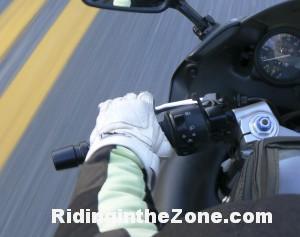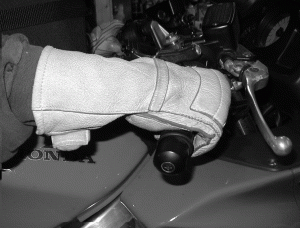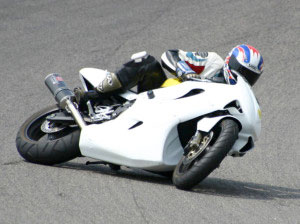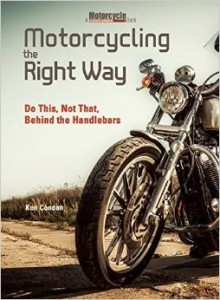
Shifting is a significant part of the riding experience. It is satisfying to smoothly click through the gears with a barely detectable interruption in forward drive as your hands and foot perform seamlessly with perfect timing and minimal effort.
Shifting gears is a skill that, once learned, becomes part of a rider’s muscle memory and is then pretty much forgotten about.
But, there is much more to shifting than simply selecting the next higher or lower gear. A truly proficient rider understands the benefits of perfectly timed shifts and knows how to use the clutch as a tool for refining control.
New riders often struggle to coordinate the clutch and shift lever, but most get past the difficulties fairly quickly. MSF Basic RideCourse students often fail because of more critical issues, such as braking or cornering problems.
Still, poor shifting skill can be a problem. Lousy coordination and timing leads to abrupt gear transitions and lurching that can compromise control and traction. Not only does this cause control problems, but it also really pisses off passengers. To become proficient, you must pay attention to refining shifting skill.
Quick Upshifting
Quick shifting allows the revs to drop only slightly between the time you squeeze the clutch, shift and then release the clutch. These rapid upshifts provide seamless power delivery.
To upshift quickly, roll off the throttle only slightly and squeeze the lever only enough to disengage the clutch while shifting the transmission into the higher gear with a quick flick. Preload the shift lever for speedy lever action. As soon as the transmission is in the higher gear, immediately release the clutch and roll on the throttle. Done correctly, the quick shift technique should take about one second and forward drive should remain steady.
Clutchless Upshifts
For the most rapid upshifts (not counting electronic shifters) you can eliminate the clutch from the upshifting process altogether. Yes, you can upshift without using the clutch! A well-timed, rapid throttle closing, in combination with a ready left foot can upshift most modern transmissions with buttery smoothness that maintains forward drive with virtually no chassis pitch.
Clutchless upshifting is done by closing the throttle as you instantaneously shift to the next higher gear and then immediately open the throttle. Each step is done simultaneously, with the entire technique taking less than a second. Done correctly, the machine will experience no added wear and tear. Try it.
Shifting Down

Good downshifting is arguably more important than upshifting for maintaining control, because poor timing and abrupt clutch release can cause excessive engine braking that may lead to a dangerous rear tire skid. Read this post warning what can happen if you select a gear that is too low.
The trick is to eeeeaaaaase out the clutch after you downshift to allow the engine to “catch up” to the road speed.
Just be sure to time your downshifts. Clicking into the next lowest gear too early, before the bike has slowed can result in a skid. To prevent this, reduce speed before downshifting.
Manufacturers understand that miscued downshifts are a hazard and install slipper clutches on many high performance motorcycles to reduce the danger of locking the rear wheel during a high rpm downshift.
Blipping the Throttle
Those of us who don’t have slipper clutches just need to learn to ease the clutch out gradually…or blip the throttle. Throttle blipping helps you to match the engine RPM with the road speed during the downshift.
I already wrote a whole blog post on throttle blipping. Please read it so I don’t have to repeat myself.
What tricks or techniques do you use to become a proficient shifter?
Buy Ken’s new book, “Motorcycling the Right Way”.
Read about strategies and techniques that increase safety, confidence and enjoyment.
Click Here for details.
Please Donate to Keep the Articles Coming
If you liked this article and the many other articles on this site, please toss a buck or five into the hat. It’s greatly appreciated!
- Click the PayPal “Pay Now” button.
- Then indicate quantity in $2.00 increments. – Example: put “2” in “QUANTITY” field to donate $4.00, “3” for a $6.00 donation, etc.
Why $2.00? Due to the PayPal fee structure, a $2.00 donation is significantly more beneficial compared to a $1.00 donation.
Thank You!
Check out these related posts:
- Guest Writer: If in doubt, UPshift
- What you need to know about Throttle Blipping
- Is Crashing Really that Bad?
- #1 Reason for Motorcycle Crashes in Corners
Stay Informed: Subscribe NOW!
Be a Better Rider: Sign Up for Personal Training with Ken
Support Riding in the Zone: Buy a book
Support Riding in the Zone: Buy recommended products from Twisted Throttle & Amazon

I encourage riders to master the four basic skills: straight-line riding, shifting, slowing, and turning. Pick something to practice for the day. Not only does it allow self-assessment but also keeps “your mind in the game”. Ride safe, always!
Hmmm. I’m a little surprised there isn’t any discussion of downshifting without the clutch. Depending on the exact situation (i.e. on the brakes into T3 at Loudon) I’ll just “stomp” (I’m normal people shift) as I’m using my hands for other purposes.
It’s certainly true that the rear end can “shake” a bit, but on the brakes, in a straight line, who cares… am I doing it wrong?
While some people downshift without the clutch, it is not a technique I endorse. You run the risk of locking the tire if you don’t time it right and it can get a bit rough on the tranny. If you have a slipper clutch there is less risk, but it’s still best to modulate engine braking by using the clutch.
I found this article http://www.trackdaymag.com/thementalaspect/283-throttle-blipping-for-downshifts.html that broke the procedure down into tasks that could be practiced individually; it was a big help.
-Steve
1987 BMW K75S
That article does a good job describing one way to learn to blip. Unfortunately, there are some misinformation, particularly under the “slipper clutch” section. Can anyone spot them? Hint: the rear brake and its affect on control.